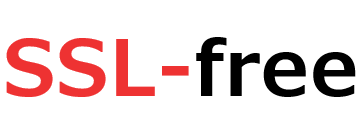Certificate Signing Request (CSR) Overview
Before you can generate your SSL Certificate, the certificate requester must create a Certificate Signing Request (CSR) for a domain name or hostname on your web server. The CSR is a standardized way to send the issuing Certificate Authority (CA) your public key, which is paired with a secret private key on the server, and provides relevant information about the requester as indicated below:
Common Name (CN):
This is the Fully Qualified Domain Name (FQDN) of your server (i.e. www.google.com). This must match exactly what you type in your web browser or you may receive a security error.
Organization Name (O):
The legal name of your company/organization (i.e. Google, Inc.). Do not abbreviate your company name and it should include the corporate identifier such as Inc., Corp, or LLC (if applicable). For DV orders, you can use your personal name (i.e. John Doe).
Organization Unit (OU):
The unit or division of the company/organization managing the certificate (i.e. IT Department).
Locality (L):
The city that you are located in (i.e. Mountain View)
State or Province Name (ST):
The state or province in which you are located in (i.e. California)
Country (C):
The country in which you are located in (i.e. United States or US)
Email Address:
An email address associated with the company (i.e. webmaster@google.com)
Root Length:
The bit-length of the key pair determines the strength of the key and how easily it can be cracked using brute force methods. 2048-bit key size is the new industry standard and is used to ensure security well into the foreseeable future.
Signature Algorithm:
Hashing algorithm are used by issuing Certificate Authorities to actually sign certificates and CRLs (Certificate Revocation List) to generate unique hash values from files. It is highly recommended that your certificate be signed with SHA-2 as this is the strongest signature algorithm adopted by the industry.
As mentioned above, in addition to creating a CSR, the web server will also export another file called a private key. The private key is a unique cryptographic key related to the corresponding CSR and should never be shared with anyone outside your secured server environment. The private key is mathematically used to decrypt whatever sensitive data that.s transmitted & encrypted with its corresponding public key and vice versa. If the private key is lost or compromised, malicious users could potentially read your encrypted communications and put your organization.s reputation at risk, which defeats the entire methodology behind the Public Key Infrastructure (PKI). If the private key is lost or compromised, we highly recommend creating a new key pair and replacing or reissuing your SSL Certificate.
Example CSR
Most CSRs are created in the Base-64 encoded PEM format and include the …BEGIN CERTIFICATE REQUEST…and …END CERTIFICATE REQUEST… lines as the header and footer tags of the CSR. A standard PEM format CSR will look like the following example:
—–BEGIN CERTIFICATE REQUEST—– MIIDGDCCAgACAQAwgakxCzAJBgNVBAYTAlVTMRMwEQYDVQQIEwpDYWxpZm9ybmlhMRYwFAYDVQQHEw1Nb3VudGFpbiBWaWV3MRYwFAYDVQQKEw1Hb29nbGUsIEluYy4gMRcwFQYDVQQLEw5JVCBEZXB0YXJ0bWVudDEXMBUGA1UEAxMOd3d3Lmdvb2dsZS5jb20xIzAhBgkqhkiG9w0BCQEWFHdlYm1hc3RlckBnb29nbGUuY29tMIIBIjANBgkqhkiG9w0BAQEFAAOCAQ8AMIIBCgKCAQEAq3NT5DBBDql5gTB4/6Zsq/C1iwO4yBD2nThaNfO1qHKUjnFz0oua+54x97TjmHItRH5H+jPJvmzzb4TUJ274CRFhquOOMZVMdVIG9FUjogJstMqv4GtBC4C/ype0ilAcPEBjRi9bFiR/g43qPCnlRAJNo4cJko7nW7erAJsRPNiQMr5UJN9h3GuQMPw6uaI/0OWuWjSTLzEBMujHhPySgZIv1SurVXDziFC6S6qvc9XQ1z6tkmrttdoOfDI+eT75QxysHmctgAvkZaFEoRASqcqf3iYyl9Qwmh0xuLSoR9HTvaD9DhxAIa4/1+l6D9MGb/01+lip7AjqdnTTzSBfcQIDAQABoCkwJwYJKoZIhvcNAQkOMRowGDAJBgNVHRMEAjAAMAsGA1UdDwQEAwIF4DANBgkqhkiG9w0BAQsFAAOCAQEAZyMkFtElkS3vQoCPVHevrFcPgrx/Fqx0UdQdnf2RyoJ3jqiUyPo5+5BHA9kY0TuJLhgMIq0QWAbzZYNL0+J8UUcx8EvMK6DqPpKteyYFCMw6GEzudiq4RE/8Ea9UpGbw8GH1oEsUksBTwrs06OSOVgDXkJ1XY4VaRkMPflgQWGULgKYO2P/zcFowENruGLJO7ynyUkm5idKdYzDqk7c7bqyLywOEPxSRKVyblmzqiFCOlCqpHozZ9+5TmrMPD/hO1uHVECcL08RMGXoGMajojI8CE+cmkaWLq3PZt08Sv0F/ItopO8XAZ2bYTK4HQfPm+Fud22SD+DkSwt8vN8Lu2g==
—–END CERTIFICATE REQUEST—–
If you create a CSR and wish to verify the accuracy of the details contained within (i.e. Common Name, Organization Name, etc.), you can easily decode the encrypted text using our CSR Decoder. This tool is commonly used to troubleshoot error messages received during the generation process. For example, if you purchase a Wildcard SSL Certificate and paste in a CSR with Common Name: www.google.com, you will receive an error message during the generation process since the Common Name does not have an asterisk .*. at the left furthest sub-domain level (i.e. *.google.com) within the Common Name field. This tool will allow you to verify the entry mistake and proceed with creating a new key pair.
